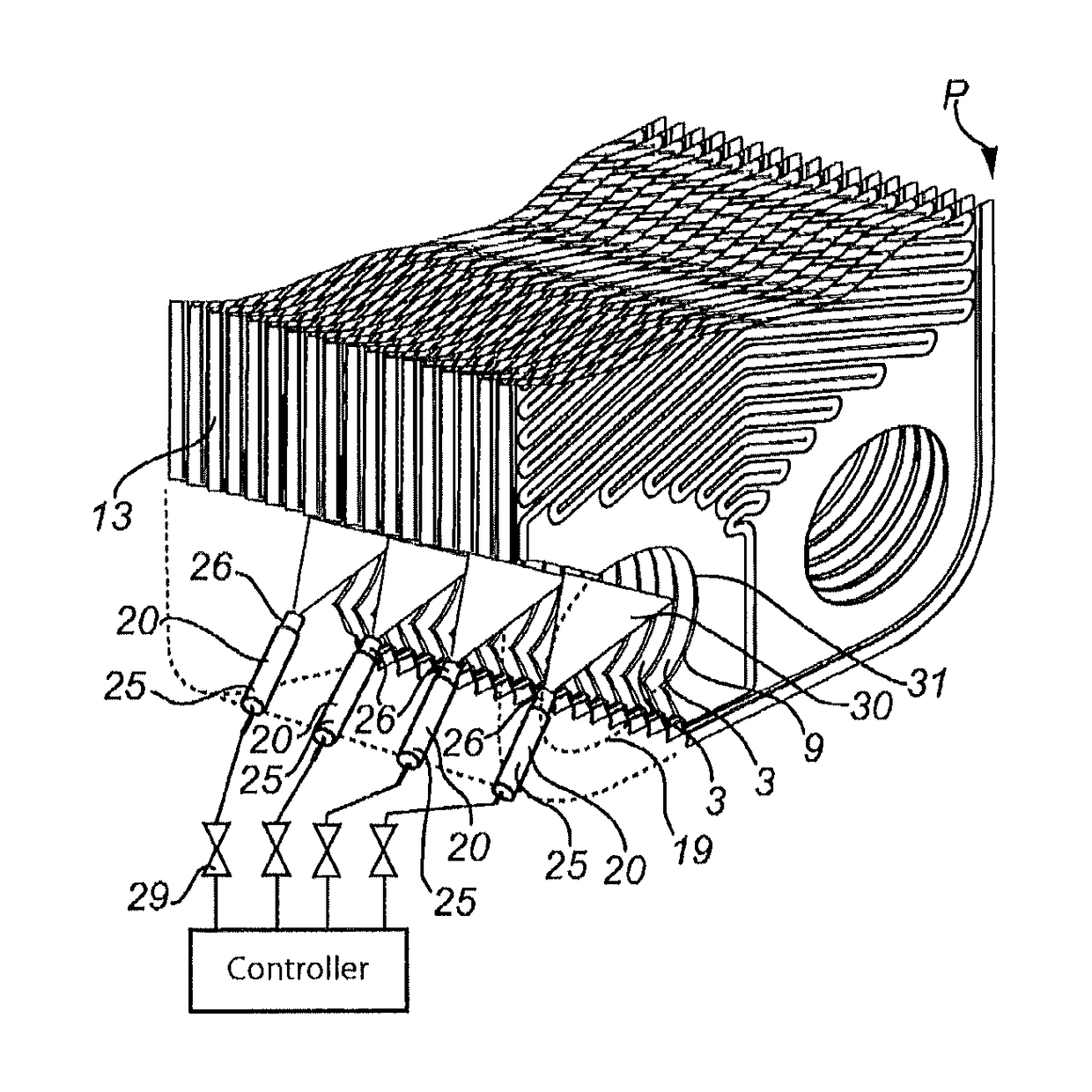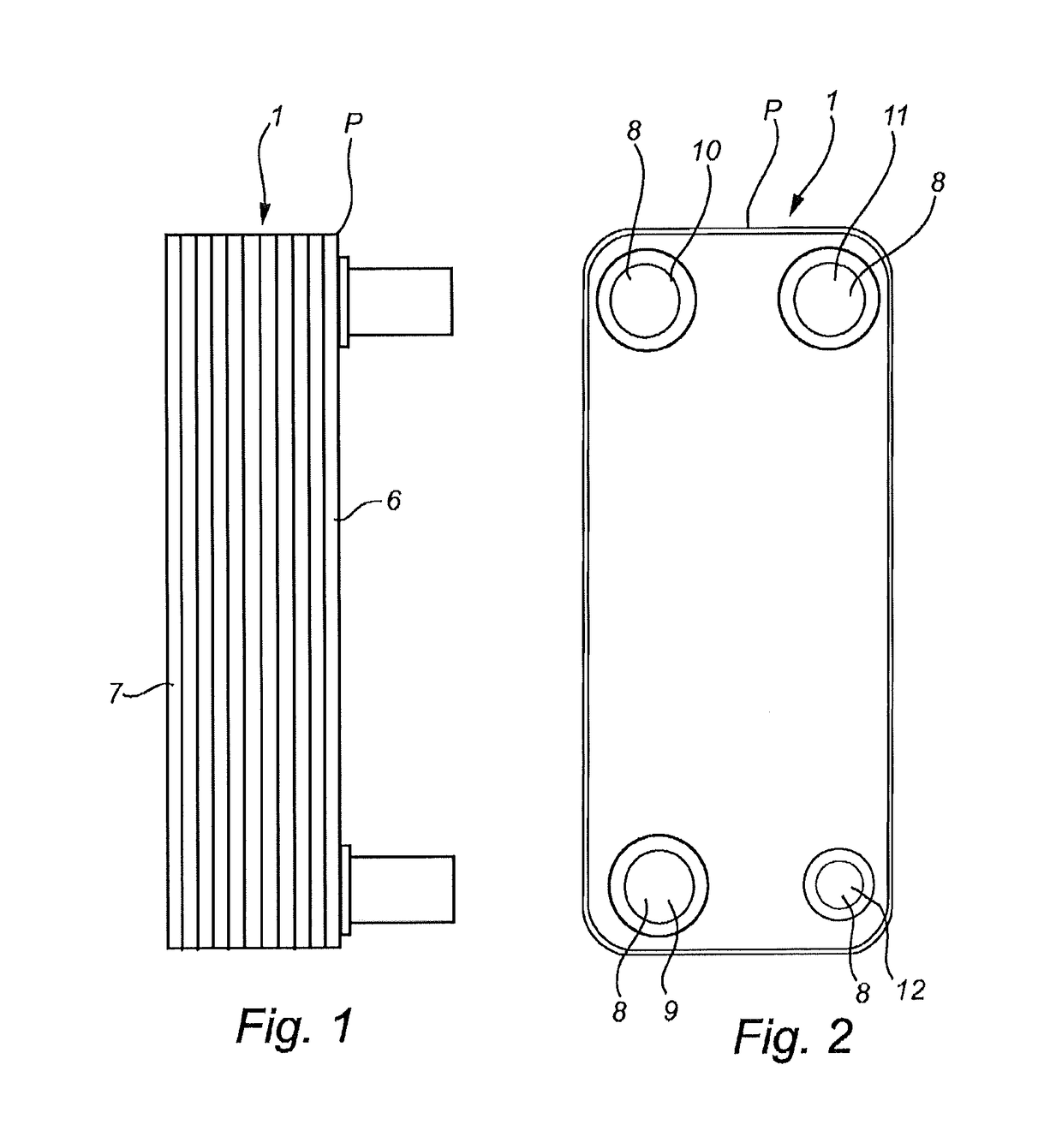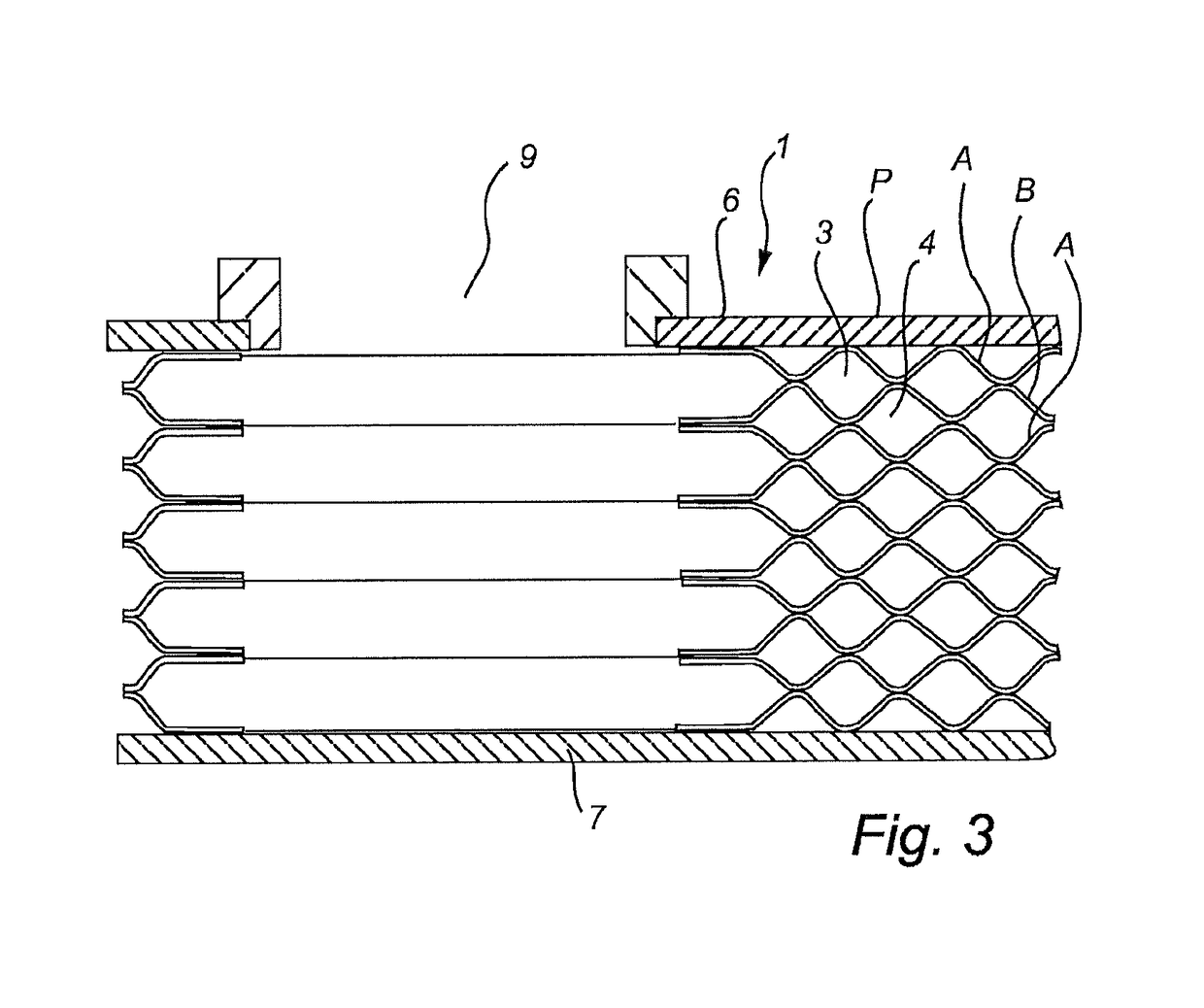Plate heat exchanger
a technology of heat exchanger and plate, which is applied in the direction of indirect heat exchangers, lighting and heating apparatus, and separation processes, etc., can solve the problems of difficult control of the flow inside the first inlet channel, insufficient heat exchanger efficiency, so as to reduce the number of heat exchanger plates and the amount of cooling agent. , to achieve the effect of improving the efficiency of the plate heat exchanger, reducing the number of heat exchanger plates and the amount of cooling
- Summary
- Abstract
- Description
- Claims
- Application Information
AI Technical Summary
Benefits of technology
Problems solved by technology
Method used
Image
Examples
Embodiment Construction
[0047]FIGS. 1 to 3 disclose a typical example of a plate heat exchanger 1. The plate heat exchanger 1 includes a plate package P, which is formed by a number of compression molded heat exchanger plates A, B, which are provided side by side of each other. The plate heat exchanger 1 comprises two different types of heat exchanger plates, which in the following are called the first heat exchanger plates A, see FIGS. 3 and 4, and the second heat exchanger plate B, see FIGS. 3 and 5. The plate package P includes substantially the same number of first heat exchanger plates A and second heat exchanger plates B. As is clear from FIG. 3, the heat exchanger plates A, B are provided side by side in such a way that a first plate interspace 3 is formed between each pair of adjacent first heat exchanger plates A and second heat exchanger plates B, and a second plate interspace 4 between each pair of adjacent second heat exchanger plates B and first heat exchanger plates A.
[0048]Every second plate...
PUM
 Login to view more
Login to view more Abstract
Description
Claims
Application Information
 Login to view more
Login to view more - R&D Engineer
- R&D Manager
- IP Professional
- Industry Leading Data Capabilities
- Powerful AI technology
- Patent DNA Extraction
Browse by: Latest US Patents, China's latest patents, Technical Efficacy Thesaurus, Application Domain, Technology Topic.
© 2024 PatSnap. All rights reserved.Legal|Privacy policy|Modern Slavery Act Transparency Statement|Sitemap



